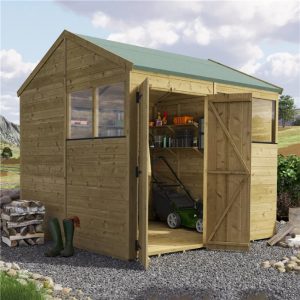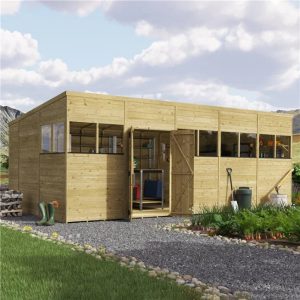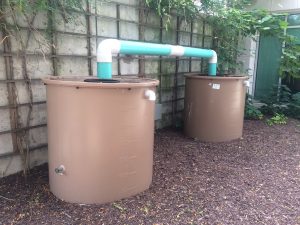Garden sheds are mostly built from natural materials like wood, which add up to their sustainability qualities. Even so, additional building techniques can further improve their eco-friendly aspects. In this guide, we’ll explain what sustainable sheds are, how they work, and their impact on both the environment and your finances.
What Are Sustainable Garden Sheds?

Sustainable garden sheds serve the same purpose as traditional shed structures — the only difference is they’re designed with sustainability in mind. Available models on the market are built using energy-efficient materials, mostly relying on renewable sources. They can also be DIYed, although this process may require extra time and expertise in specific areas.
For instance, the roof of a sustainable shed usually comes equipped with solar panels. In commercially available models, this feature can be pre-installed or provided as a kit for easy installation. The DIY route involves installing solar panels on the roof of your existing shed, either by yourself or with professional assistance. The same applies to other energy-efficient features, such as insulation and heating sources.
How Do Sustainable Sheds Work?
Sustainable garden sheds are composed of various parts and features that make up for their sustainability. They all work together to ensure the structure remains cost-effective over its lifespan. We’ll break down the common ones below:
Wood structure

Wooden summerhouses made from sustainably sourced wood reduce carbon footprint. This process also minimises the impact of logging on forests. Meaning that seedlings are planted faster than trees are cut down. Moreover, the timber itself is a natural thermal insulator. This helps reduce the need for additional heating and cooling, and it prevents moisture buildup that can damage stored items.
Garden Buildings Direct sources its timber from renewable suppliers, who plant trees to replace those that are cut down. This method is important to us as we ensure that our BillyOh wooden buildings are manufactured without great cost to the environment.
Energy-efficient design
While timber is a natural insulator, it may not be enough to prevent heat loss in winter or heat gain in summer. That’s why many sustainable garden sheds are designed with floor, wall, and roof insulation. The use of double-glazed windows and well-sealed doors also helps create a more energy-efficient environment inside the garden storage. These are especially beneficial if you decide to use the structure for more than just storage, such as with these shed interior ideas.
Extra features like solar panels provide an alternative method for running electricity in the shed. This renewable energy source provides power without relying on fossil fuels. Check out our guide, ‘How to Install Solar Panels on a Shed,’ to learn more.
Water management

A water management system in a sustainable shed is also a contributing factor. These systems collect rainwater from the roof and store it in tanks. The collected water can then be used for watering plants, cleaning tools, or other non-drinking purposes. This reduces the demand on the mains water supply, conserves water resources, and lowers water bills.
Round-up
The more components of your wooden shed that are made of energy-efficient materials, the better. Consider what materials you’ll use for roofing, siding, windows, doors, insulation, and any other component of your garden room. As for the benefits, they all come down to reduced environmental impact and lower operating costs.
Up next on your reading list: Eco-Friendly Plastic Sheds: A Complete Guide

